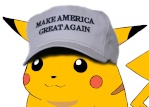
Ћина-Средње Краљевство

- Posts : 52642
Join date : 2017-11-16
- Post n°151
 Re: Ћина-Средње Краљевство
Re: Ћина-Средње Краљевство


- Posts : 7693
Join date : 2020-03-05
- Post n°152
 Re: Ћина-Средње Краљевство
Re: Ћина-Средње Краљевство
_____
"Burundi je svakako sharmantno mesto cinika i knjiskih ljudi koji gledaju stvar sa svog olimpa od kartona."
“Here he was then, cruising the deserts of Mexico in my Ford Torino with my wife and my credit cards and his black-tongued dog. He had a chow dog that went everywhere with him, to the post office and ball games, and now that red beast was making free with his lion feet on my Torino seats.”

- Posts : 13817
Join date : 2016-02-01
- Post n°153
 Re: Ћина-Средње Краљевство
Re: Ћина-Средње Краљевство
The language inside changes from perfect English to passages riddled with grammatical errors and back again. The books I have seen all appeared in the last week or so, and many mention Nancy Pelosi in the title. The overall bias is strongly pro-PRC. 2/4
— Michael Cannings (@formosaphile) August 5, 2022
The sheer number of new titles in a short space of time suggests this is a concerted effort to "flood the zone" with crap and make it harder to find genuine information on the subject. Hopefully @amazon will take swift action to remove them. 4/4
— Michael Cannings (@formosaphile) August 5, 2022

- Posts : 22555
Join date : 2014-12-01
- Post n°154
 Re: Ћина-Средње Краљевство
Re: Ћина-Средње Краљевство

- Posts : 13817
Join date : 2016-02-01
- Post n°155
 Re: Ћина-Средње Краљевство
Re: Ћина-Средње Краљевство
Just now: #Taiwan’s army in Kinmen island said 3 #Chinese drones entered restricted waters near the island & they fired flares to warn them off.
— Indo-Pacific News - Watching the CCP-China Threat (@IndoPac_Info) August 6, 2022
This is the third night in a row with such drone activity there. This is a bad sign........https://t.co/AnBJ0MBaa9 pic.twitter.com/WC7xtf36w5
A lot of intel gathering as testing the defense response, as it happens during invasion preparations.
— Indo-Pacific News - Watching the CCP-China Threat (@IndoPac_Info) August 6, 2022

- Posts : 5620
Join date : 2016-01-26
- Post n°157
 Re: Ћина-Средње Краљевство
Re: Ћина-Средње Краљевство
Са мало више речи - опет да, RIP легендо ко год да покушава да брани та острвца.
Сам Тајван је изузетно крупан залогај, али зато Оружане снаге НР Кине могу сутра да узму ова острвца.
С тим да не видим зашто би то радили. Ништа нема тамо, само потенцијални дипломатски проблеми.
_____
Burundi is an exception among other nations because it is a country which gave God first place, a God who guards and protects from all misfortune.
Burundi... opskurno udruženje 20ak levičarskih intelektualaca, kojima je fetiš odbrana poniženih i uvredjenih.

- Posts : 8696
Join date : 2016-10-04
- Post n°159
 Re: Ћина-Средње Краљевство
Re: Ћина-Средње Краљевство
У међувремену је техника напредовала као и кинеска авијација и морнарица, па је сад положај ових острва неодбрањив.
Тривиа: једно од занимљивијих места за туристе на острву је музеј војног куплераја.

- Posts : 13817
Join date : 2016-02-01
- Post n°160
 Re: Ћина-Средње Краљевство
Re: Ћина-Средње Краљевство
China sentenced Xiao Jianhua, the Chinese Canadian billionaire snatched from a Hong Kong hotel in 2017, to 13 years in prison and fined his company $8 billion. https://t.co/qAP7gZrhjE
— NYT Business (@nytimesbusiness) August 19, 2022

- Posts : 13817
Join date : 2016-02-01
- Post n°161
 Re: Ћина-Средње Краљевство
Re: Ћина-Средње Краљевство

https://www.scmp.com/economy/china-economy/article/2168189/chinas-middle-class-spend-less-they-scrimp-and-save-their?utm_source=Yahoo&utm_medium=partner&utm_campaign=contentexchange
https://global.chinadaily.com.cn/a/201908/21/WS5d5cfbeca310cf3e3556719e.htmlMore than 60 percent of Chinese children are taking extracurricular classes and 85 percent of parents pay attention to children's after-school activities, according to a recent survey.
The survey, conducted by research institution China National Children's Center, involved 14,874 children aged between 3 and 15 from kindergarten to middle school. Respondents were spread across urban and rural areas in 10 cities, including Beijing, Guangzhou, Guangdong province and Duyun, Guizhou province.
According to the report, children in China spend 3.4 hours in total on private tutoring classes during weekday and another 3.2 hours on the weekend after the school day ends.
It costs 9,211 yuan ($1,305) - 12.84 percent of the family income – on average in child's after-school tutoring a year, according to the report.
https://www.scmp.com/news/china/society/article/3024578/chinese-parents-say-intense-competition-forces-them-sendMore than 40 per cent of Chinese parents feel they have no choice but to send their children to after-school classes because of the intense competition in the education system, according to an online poll.
But just a quarter of the respondents said they thought the extra tutoring was actually necessary for their children.
Nearly 200,000 parents had responded to the survey, conducted by social network Weibo, by Tuesday.
It comes after a report last week said 60 per cent of children aged between three and 15 in mainland China were receiving extra tutoring outside the classroom.
That report, released by the China National Children's Centre and the Social Sciences Academic Press, also said parents of children in the age range were spending an average of 9,200 yuan (US$1,290) per year on after-school classes to cope with growing academic pressure.
It was based on a survey of nearly 15,000 children in 10 mainland cities and rural areas.
For the children, that meant they were spending an average of less than two hours playing outside on weekends, according to the report. They were also found to be devoting an average of 88 minutes a day to homework on school days.
https://www.scmp.com/economy/china-economy/article/2168189/chinas-middle-class-spend-less-they-scrimp-and-save-their?utm_source=Yahoo&utm_medium=partner&utm_campaign=contentexchangeAccording to a survey of nearly 52,000 parents across the nation, most of them middle class, conducted by website Sina.com in November, spending on education accounted for an average 20 per cent of household income.
About 90 per cent of preschool children and 81 per cent of K12 students, aged six to 18, have attended tutoring courses. Families with preschoolers spent an average 26 per cent of their income on education, while those with K12 children had education-related outlays of 20 per cent of their income. Of all the respondents, about 61 per cent said they had plans to send their children to study overseas.
Since 2013, Chinese spending on education, culture and entertainment, medical care and health has risen steadily, while that for food, tobacco, alcohol and clothing has been declining, official data shows.
https://www.scmp.com/news/china/society/article/3023303/schools-out-not-china-where-children-are-under-pressure-take?module=perpetual_scroll_0&pgtype=article&campaign=3023303For eight-year-old Hanhan, a Chinese girl in Shandong province, summer break is not a time for rest and fun, but just another series of learning activities.
Dancing, piano and English are among the 11 courses Hanhan’s mother chose to fill her daughter’s summer time with, from early July to late August. (...)
In Shenzhen, one of the four first-tier cities in China besides Beijing, Shanghai and Guangzhou, a survey by state media found nearly 90 per cent of primary and middle school pupils were enrolled in at least one summer course.
Although art and sports were popular, courses that could supplement compulsory education like Chinese language, maths, English and physics were also mainstream choices, state news agency Xinhua reported last week.
About one in three enrolled students were taking more than three courses this summer, according to the report.

- Posts : 7331
Join date : 2019-11-04
- Post n°162
 Re: Ћина-Средње Краљевство
Re: Ћина-Средње Краљевство
— Finbarr Bermingham (@fbermingham) August 31, 2022
BREAKING: The UN report is finally out, just before midnight
It says that actions of the Chinese government in Xinjiang, "may constitute international crimes, in particular crimes against humanity"https://t.co/RP2JeRHZ3e pic.twitter.com/WvUSbh62LK
The UN office says it is "reasonable to conclude that a pattern of large-scale arbitrary detention occurred" in Xinjiang, "at least during 2017 to 2019, affecting a significant proportion of the Uyghur and other predominantly Muslim ethnic minority community."
— Stuart Lau (@StuartKLau) August 31, 2022

- Posts : 52642
Join date : 2017-11-16
- Post n°163
 Re: Ћина-Средње Краљевство
Re: Ћина-Средње Краљевство
The Chinese Communist Revolution was one of the most leveling events in history. The land of the better off was confiscated, and those who were wealthy were denied education. Yet, none of that mattered. Those who wealthy before, went back on top.https://t.co/OXr9yxRyyI pic.twitter.com/7dzOtEbYLd
— Nicholas says, NGDP Targeting Now!️
(@captgouda24) September 3, 2022

- Posts : 52642
Join date : 2017-11-16
- Post n°165
 Re: Ћина-Средње Краљевство
Re: Ћина-Средње Краљевство

- Posts : 82801
Join date : 2012-06-10
- Post n°166
 Re: Ћина-Средње Краљевство
Re: Ћина-Средње Краљевство
_____
"Oni kroz mene gledaju u vas! Oni kroz njega gledaju u vas! Oni kroz vas gledaju u mene... i u sve nas."
Dragoslav Bokan, Novi putevi oftalmologije

- Posts : 11663
Join date : 2018-03-03
Age : 36
Location : Hotline Rakovica
- Post n°167
 Re: Ћина-Средње Краљевство
Re: Ћина-Средње Краљевство
_____
Sve čega ima na filmu, rekao sam, ima i na Zlatiboru.
~~~~~
Ne dajte da vas prevare! Sačuvajte svoje pojene!

- Posts : 52642
Join date : 2017-11-16
- Post n°168
 Re: Ћина-Средње Краљевство
Re: Ћина-Средње Краљевство
Erős Pista wrote:Zakljuci su mu beyond stupid (u threadu).
Da, slazem se.
Moji su bolji


- Posts : 82801
Join date : 2012-06-10
- Post n°169
 Re: Ћина-Средње Краљевство
Re: Ћина-Средње Краљевство

_____
"Oni kroz mene gledaju u vas! Oni kroz njega gledaju u vas! Oni kroz vas gledaju u mene... i u sve nas."
Dragoslav Bokan, Novi putevi oftalmologije

- Posts : 52642
Join date : 2017-11-16
- Post n°170
 Re: Ћина-Средње Краљевство
Re: Ћина-Средње Краљевство
Modeling studies, like this one, suggest that China's air pollution improvements may have locally added 0.1-0.3 °C to temperatures by removing the masking effect of that air pollution.https://t.co/pAe5hFi09D
— Dr. Robert Rohde (@RARohde) October 7, 2022

- Guest
- Post n°171
 Re: Ћина-Средње Краљевство
Re: Ћина-Средње Краљевство
nije potrebno ukloniti zagađenje, nego uništavati sredinu ravnomerno, sa svih strana

- Posts : 5620
Join date : 2016-01-26
- Post n°172
 Re: Ћина-Средње Краљевство
Re: Ћина-Средње Краљевство
THREAD: The US government's new export controls are wreaking havoc on China's chip industry.
— Jordan Schneider (@jordanschnyc) October 14, 2022
New rules around "US persons" are driving an "industry-wide decapitation."
прочитајте цео низ
тврди да је кинеска производња ”обезглављена”
све је под санкцијама
Трамп је мала беба за ово
_____
Burundi is an exception among other nations because it is a country which gave God first place, a God who guards and protects from all misfortune.
Burundi... opskurno udruženje 20ak levičarskih intelektualaca, kojima je fetiš odbrana poniženih i uvredjenih.

- Posts : 15578
Join date : 2016-03-28
- Post n°173
 Re: Ћина-Средње Краљевство
Re: Ћина-Средње Краљевство
Ili ce da ih slome ili cemo da gledamo perl harbor 2Јанош Винету wrote:THREAD: The US government's new export controls are wreaking havoc on China's chip industry.
— Jordan Schneider (@jordanschnyc) October 14, 2022
New rules around "US persons" are driving an "industry-wide decapitation."
прочитајте цео низ
тврди да је кинеска производња ”обезглављена”
све је под санкцијама
Трамп је мала беба за ово

_____
Što se ostaloga tiče, smatram da Zapad treba razoriti
Jedini proleter Burundija
Pristalica krvne osvete

- Posts : 15578
Join date : 2016-03-28
- Post n°174
 Re: Ћина-Средње Краљевство
Re: Ћина-Средње Краљевство
_____
Što se ostaloga tiče, smatram da Zapad treba razoriti
Jedini proleter Burundija
Pristalica krvne osvete

- Posts : 8095
Join date : 2020-09-07
- Post n°175
 Re: Ћина-Средње Краљевство
Re: Ћина-Средње Краљевство
U.S. officials pushed to choke off China’s access to critical semiconductor technology after internal debates and tough negotiations with allies.
By Ana Swanson, Edward Wong
Updated Oct. 14, 2022 03:20 PM
View original
WASHINGTON — In conversations with American executives this spring, top officials in the Biden administration revealed an aggressive plan to counter the Chinese military’s rapid technological advances.
nytimes
- Spoiler:
- With New Crackdown, Biden Wages Global Campaign on Chinese Technology
U.S. officials pushed to choke off China’s access to critical semiconductor technology after internal debates and tough negotiations with allies.
By Ana Swanson, Edward Wong
Updated Oct. 14, 2022 03:20 PM
View original
WASHINGTON — In conversations with American executives this spring, top officials in the Biden administration revealed an aggressive plan to counter the Chinese military’s rapid technological advances.
China was using supercomputing and artificial intelligence to develop stealth and hypersonic weapons systems, and to try to crack the U.S. government’s most encrypted messaging, according to intelligence reports. For months, administration officials debated what they could do to hobble the country’s progress.
They saw a path: The Biden administration would use U.S. influence over global technology and supply chains to try to choke off China’s access to advanced chips and chip production tools needed to power those abilities. The goal was to keep Chinese entities that contributed to potential threats far behind their competitors in the United States and in allied nations.
The effort, no less than what the Americans carried out against Soviet industries during the Cold War, gained momentum this year as the United States tested powerful economic tools against Russia as punishment for its invasion of Ukraine, and as China broke barriers in technological development. The Russian offensive and Beijing’s military actions also made the possibility of a Chinese invasion of Taiwan seem more real to U.S. officials.
The administration’s concerns about China’s tech ambitions culminated last week in the unveiling of the most stringent controls by the U.S. government on technology exports to the country in decades — an opening salvo that would ripple through global commerce and could frustrate other governments and companies outside China.
In a speech on Wednesday on the administration’s national security strategy, Jake Sullivan, the national security adviser, talked about a “small yard, high fence” for critical technologies.
“Choke points for foundational technologies have to be inside that yard, and the fence has to be high because these competitors should not be able to exploit American and allied technologies to undermine American and allied security,” he said.
This account of how President Biden and his aides decided to wage a new global campaign against China, which contains previously unreported details, is based on interviews with two dozen current and former officials and industry executives. Most spoke on the condition of anonymity to discuss deliberations.
The measures were particularly notable given the Biden administration’s preference for announcing policies in tandem with allies to counter rival powers, as it did with sanctions against Russia.
With China, the administration spent months in discussions with allies, including the Dutch, Japanese, South Korean, Israeli and British governments, and tried to persuade some of them to issue restrictions alongside the United States.
But some of those governments have been hesitant to cut off important commerce with China, one of the world’s largest technology markets. So the Biden administration decided to act alone, without public measures from allies.
More on the Relations Between Asia and the U.S.
Taiwan: American officials are intensifying efforts to build a giant stockpile of weapons in Taiwan in case China blockades the island as a prelude to an attempted invasion, according to current and former officials.
North Korea: Pyongyang fired an intermediate range ballistic missile over Japan for the first time since 2017, when Kim Jong-un seemed intent on escalating conflict with Washington. But the international landscape has changed considerably since then.
A Broad Partnership: The United States and 14 Pacific Island nations signed an agreement at a summit in Washington, putting climate change, economic growth and stronger security ties at the center of an American push to counter Chinese influence.
South Korea: President Yoon Suk Yeol has aligned his country more closely with the United States, but there are limits to how far he can go without angering China or provoking North Korea.
Gregory C. Allen, a former Defense Department official who is now at the Center for Strategic and International Studies, said the move came after consultation with allies but was “fundamentally unilateral.”
“In weaponizing its dominant choke-point positions in the global semiconductor value chain, the United States is exercising technological and geopolitical power on an incredible scale,” he wrote in an analysis.
The package of restrictions allows the administration to cut off China from certain advanced chips made by American and foreign companies that use U.S. technology.
President Biden visited an IBM factory in Poughkeepsie, N.Y., last week.Credit...Erin Schaff/The New York Times
U.S. officials described the decision to push ahead with export controls as a show of leadership. They said some allies wanted to impose similar measures but feared retaliation from China, so the rules from Washington that encompass foreign companies did the hard work for them.
Other rules bar American companies from selling Chinese firms equipment or components needed to manufacture advanced chips, and prohibit Americans and U.S. companies from giving software updates and other services to China’s cutting-edge chip factories.
The measures do not directly restrict foreign makers of semiconductor equipment from selling products to China. But experts said the absence of the American equipment would most likely impede China’s nascent industry for making advanced chips. Eventually, though, that leverage could fade as China develops its own key production technologies.
Some companies have chafed at the idea of losing sales in a lucrative market. In a call with investors in August, an executive at Tokyo Electron in Japan said the company was “very concerned” that restrictions could prevent its Chinese customers from producing chips. ASML, the Dutch equipment maker, has expressed criticisms.
Chinese officials called the U.S. restrictions a significant step aimed at sabotaging their country’s development. The move could have broad implications — for example, limiting advances in artificial intelligence that propel autonomous driving, video recommendation algorithms and gene sequencing, as well as quashing China’s chip-making industry.
China could respond by punishing foreign companies with operations there. And the way Washington is imposing the rules could strain U.S. alliances, some experts say.
Top officials in the Biden administration have an aggressive plan to counter the Chinese military’s rapid technological advances.Credit...Kevin Frayer/Getty Images
“Sanctions that put the United States at odds with its allies and partners today will both undercut their effectiveness and make it harder to enroll a broad coalition of states in U.S. deterrence efforts,” said Jessica Chen Weiss, a professor of government at Cornell University and a recent State Department official.
Others have argued that the moves did not come soon enough. For years, U.S. intelligence reports warned that American technology was feeding China’s efforts to develop advanced weapons and surveillance networks that police its citizens.
Last October, the intelligence community began highlighting the risks posed by Chinese advances in artificial intelligence, quantum computing and semiconductors in meetings with industry and government officials.
What we consider before using anonymous sources. Do the sources know the information? What’s their motivation for telling us? Have they proved reliable in the past? Can we corroborate the information? Even with these questions satisfied, The Times uses anonymous sources as a last resort. The reporter and at least one editor know the identity of the source.
Mr. Sullivan and other officials began pushing to curb sales of semiconductor technology, according to current and former officials and others familiar with the discussions.
But some officials, including Commerce Secretary Gina Raimondo and her deputies, wanted to first secure the cooperation of allies. Starting late last year, they said in meetings that by acting alone, the United States risked harming its companies without doing much to stop Chinese firms from buying important technology from foreign competitors.
The Trump administration announced restrictions on the Chinese tech giant Huawei and singled out the company as a threat to national security.Credit...Qilai Shen for The New York Times
A Diplomatic Push
Even as the Trump administration took some aggressive actions against Chinese technology, like barring international shipments to Huawei, it began quiet diplomacy on semiconductor production equipment. U.S. officials talked with their counterparts in Japan and then the Netherlands — countries where companies make critical tools — on limiting exports to China, said Matthew Pottinger, a deputy national security adviser in the Trump administration.
Biden administration officials have continued those talks, but some negotiations have been difficult. U.S. officials spent months trying to persuade the Netherlands to prevent ASML from selling older lithography machines to Chinese semiconductor companies, but they were rebuffed.
U.S. officials carried out separate negotiations with South Korea, Taiwan, Israel and Britain on restricting the sale and design of chips.
Outside of the diplomacy, there was increasing evidence that a tool the United States had used to restrict China’s access to technology had serious flaws. Under President Donald J. Trump, the United States added hundreds of companies to a so-called entity list that prohibited American companies from selling them sensitive products without a license.
But each listing was tied to a specific company name and address, making it relatively easy to evade the restrictions, said Ivan Kanapathy, a former China director for the National Security Council.
Current and former U.S. officials suspect the Chinese military and previously sanctioned Chinese companies, including Huawei, have tried to gain access to restricted technology through front companies. Huawei declined to comment.
Huawei could soon face additional restrictions: The Federal Communications Commission is expected to vote in the coming weeks on rules that would block the authorization of new Huawei equipment in the United States over national security concerns.
Biden officials also believed the restrictions issued by the Trump administration against Semiconductor Manufacturing International Corporation, a major Chinese chip maker known as SMIC, had been watered down by industry and were allowing too many sales to continue, people familiar with the matter said.
In a call with heads of American semiconductor equipment makers in March, Mr. Sullivan said that the United States was no longer satisfied with the status quo with China, and that it was seeking to freeze Chinese technology, said one executive familiar with the discussion.
Mr. Sullivan, who had dialed into the call alongside Ms. Raimondo and Brian Deese, the director of the National Economic Council, told executives from KLA, Applied Materials and Lam Research that rules restricting equipment shipments to China would be done with allies, the executive said.
In a statement, the National Security Council said the measures were “consistent with the message we delivered to U.S. executives because the administration has controlled only tools made by U.S. companies where there is no foreign competitor.”
The State Department announced on Thursday that Antony J. Blinken, the U.S. secretary of state, would visit Applied Materials during a two-day trip to California starting Sunday. It said he will tour a “lab producing innovations critical to the supply chain for advanced chips.” Applied Materials said on Wednesday that it is cutting its estimate for fourth-quarter revenues because of the new restrictions on exports to China.
A semiconductor plant in Suining, China. The Biden administration took action in August to clamp down on the country’s semiconductor industry.Credit...Zhong Min/Feature China/Future Publishing, via Getty Images
Breakthrough in China
As the negotiations with allied governments continued, experts at the Commerce, Defense, Energy and State Departments spent months poring over spreadsheets listing dozens of semiconductor tools made by U.S. companies to determine which could be used for advanced chip production and whether companies in Japan and the Netherlands produced comparable equipment.
Then in July came alarming news. A report emerged that SMIC had cleared a major technological hurdle, producing a semiconductor that rivaled some complex chips made in Taiwan.
The achievement prompted an explosion of dissatisfaction in the White House and on Capitol Hill with U.S. efforts to restrain China’s technological advancement.
The Biden administration took action in August to clamp down on China’s semiconductor industry, sending letters to equipment manufacturers and chip makers barring them from selling certain products to China.
Last week, the administration issued the rules with global reach.
Companies immediately began halting shipments to China. But U.S. officials said they would issue licenses on a case-by-case basis so some non-Chinese companies could continue supplying their Chinese facilities with support and components. Intel, TSMC, Samsung and SK Hynix said they had received temporary exemptions to the rules.
The controls could be the beginning of a broad assault by the U.S. government, Mr. Pottinger said.
“The Biden administration understands now that it isn’t enough for America to run faster — we also need to actively hamper the P.R.C.’s ambitions for tech dominance,” he said, referring to the People’s Republic of China. “This marks a serious evolution in the administration’s thinking.”
Julian Barnes and David McCabe contributed reporting.
We Are Suddenly Taking On China and Russia at the Same Time
A battle over computer chips could have more long-term global impact than the Ukraine war.
By Thomas L. Friedman
Updated Oct. 13, 2022 01:32 AM
- Spoiler:
- We Are Suddenly Taking On China and Russia at the Same Time
A battle over computer chips could have more long-term global impact than the Ukraine war.
By Thomas L. Friedman
Updated Oct. 13, 2022 01:32 AM
View original
In case you haven’t noticed, let me alert you to a bracing turn of events: The U.S. is now in conflict with Russia and China at the same time. Grandma always said, “Never fight Russia and China at the same time.” So did Henry Kissinger. Alas, there is a strong case in the national interest for confronting both today. But have no doubt: We are in uncharted waters. I just hope that these are not our new “forever wars.”
The struggle with Russia is indirect, but obvious, escalating and violent. We are arming the Ukrainians with smart missiles and intelligence to force the Russians to withdraw from Ukraine. While taking nothing away from the bravery of the Ukrainians, the U.S. and NATO’s support has played a giant role in Ukraine’s battlefield successes. Just ask the Russians. But how does this war end? No one can tell you.
Today, though, I want to focus on the struggle with China, which is less visible and involves no shooting, because it is being fought mostly with transistors that toggle between digital 1s and 0s. But it will have as big, if not bigger, an impact on the global balance of power as the outcome of the combat between Russia and Ukraine. And it has little to do with Taiwan.
It is a struggle over semiconductors — the foundational technology of the information age. The alliance that designs and makes the smartest chips in the world will also have the smartest precision weapons, the smartest factories and the smartest quantum computing tools to break virtually any form of encryption. Today, the U.S. and its partners lead, but China is determined to catch up — and we are now determined to prevent that. Game on.
Last week, the Biden administration issued a new set of export regulations that in effect said to China: “We think you are three technology generations behind us in logic and memory chips and equipment, and we are going to ensure that you never catch up.” Or, as the national security adviser Jake Sullivan put it more diplomatically: “Given the foundational nature of certain technologies, such as advanced logic and memory chips, we must maintain as large of a lead as possible” — forever.
“The U.S. has essentially declared war on China’s ability to advance the country’s use of high-performance computing for economic and security gains,” Paul Triolo, a China and tech expert at Albright Stonebridge, a consulting firm, told The Financial Times. Or as the Chinese Embassy in Washington framed it, the U.S. is going for “sci-tech hegemony.”
But where does this war end? No one can tell you. I don’t want to be ripped off by a China that is increasingly using technology for absolute control at home and creepy power-projection abroad. But if we are now locked on a path of denying China advanced technologies forever — eliminating any hope of win-win collaborations with Beijing on issues like climate and cybercrime, where we face mutual threats and are the only two powers that can make a difference — what kind of world will that produce? China should be asking the same questions.
All I know for sure is that regulations issued Friday by President Biden’s Commerce Department are a formidable new barrier when it comes to export controls that will block China from being able to buy the most advanced semiconductors from the West or the equipment to manufacture them on its own.
The new regulations also bar any U.S. engineer or scientist from aiding China in chip manufacturing without specific approval, even if that American is working on equipment in China not subject to export controls. The regs also tighten the tracking to ensure that U.S.-designed chips sold to civilian companies in China don’t get into the hands of China’s military. And, maybe most controversially, the Biden team added a “foreign direct product rule” that, as The Financial Times noted, “was first used by the administration of Donald Trump against Chinese technology group Huawei” and “in effect bars any U.S. or non-U.S. company from supplying targeted Chinese entities with hardware or software whose supply chain contains American technology.”
This last rule is huge, because the most advanced semiconductors are made by what I call “a complex adaptive coalition” of companies from America to Europe to Asia. Think of it this way: AMD, Qualcomm, Intel, Apple and Nvidia excel at the design of chips that have billions of transistors packed together ever more tightly to produce the processing power they are seeking. Synopsys and Cadence create sophisticated computer-aided design tools and software on which chip makers actually draw up their newest ideas. Applied Materials creates and modifies the materials to forge the billions of transistors and connecting wires in the chip. ASML, a Dutch company, provides the lithography tools in partnership with, among others, Zeiss SMT, a German company specializing in optical lenses, which draws the stencils on the silicon wafers from those designs, using both deep and extreme ultraviolet light — a very short wavelength that can print tiny, tiny designs on a microchip. Intel, Lam Research, KLA and firms from Korea to Japan to Taiwan also play key roles in this coalition.
The point is this: The more we push the boundaries of physics and materials science to cram more transistors onto a chip to get more processing power to continue to advance artificial intelligence, the less likely it is that any one company, or country, can excel at all the parts of the design and manufacturing process. You need the whole coalition. The reason Taiwan Semiconductor Manufacturing Company, known as TSMC, is considered the premier chip manufacturer in the world is that every member of this coalition trusts TSMC with its most intimate trade secrets, which it then melds and leverages for the benefit of the whole.
Because China is not trusted by the coalition partners not to steal their intellectual property, Beijing is left trying to replicate the world’s all-star manufacturing chip stack on its own with old technologies. It managed to pilfer a certain amount of chip technology, including 28 nanometer technology from TSMC back in 2017.
Until recently, China’s premier chip maker, Semiconductor Manufacturing International Company, had been thought to be stuck at mostly this chip level, although it claims to have produced some chips at the 14 nm and even 7 nm scale by jury-rigging some older-generation Deep UV lithography from ASML. U.S. experts told me, though, that China can’t mass produce these chips with precision without ASML’s latest technology — which is now banned from the country.
This week I interviewed U.S. Secretary of Commerce Gina Raimondo, who oversees both the new export controls on chips and the $52.7 billion that the Biden administration has just secured to support more U.S. research on next-generation semiconductors and to bring advanced chip manufacturing back to the U.S. Raimondo rejects the idea that the new regulations are tantamount to an act of war.
“The U.S. was in an untenable position,” she told me in her office. “Today we are purchasing 100 percent of our advanced logic chips from abroad — 90 percent from TSMC in Taiwan and 10 percent from Samsung in Korea.” (That IS pretty crazy, but it IS true.)
“We do not make in the U.S. any of the chips we need for artificial intelligence, for our military, for our satellites, for our space programs” — not to mention myriad nonmilitary applications that power our economy. The recent CHIPS Act, she said, was our “offensive initiative” to strengthen our whole innovation ecosystem so more of the most advanced chips will be made in the U.S.
Imposing on China the new export controls on advanced chip-making technologies, she said, “was our defensive strategy. China has a strategy of military-civil fusion,” and Beijing has made clear “that it intends to become totally self-sufficient in the most advanced technologies” to dominate both the civilian commercial markets and the 21st century battlefield. “We cannot ignore China’s intentions.”
So, to protect ourselves and our allies — and all the technologies we have invented individually and collectively — she added, “what we did was the next logical step, to prevent China from getting to the next step.” The U.S. and its allies design and manufacture “the most advanced supercomputing chips, and we don’t want them in China’s hands and be used for military purposes.”
Our main focus, concluded Raimondo, “is playing offense — to innovate faster than the Chinese. But at the same time, we are going to meet the increasing threat they are presenting by protecting what we need to. It is important that we de-escalate where we can and do business where we can. We don’t want a conflict. But we have to protect ourselves with eyes wide open.”
China’s state-directed newspaper Global Times editorialized that the ban would only “strengthen China’s will and ability to stand on its own in science and technology.” Bloomberg quoted an unidentified Chinese analyst as saying “there is no possibility of reconciliation.”
Welcome to the future…
_____



 by Nektivni Ugnelj Sat Aug 06, 2022 3:10 pm
by Nektivni Ugnelj Sat Aug 06, 2022 3:10 pm
 Летећи Полип
Летећи Полип